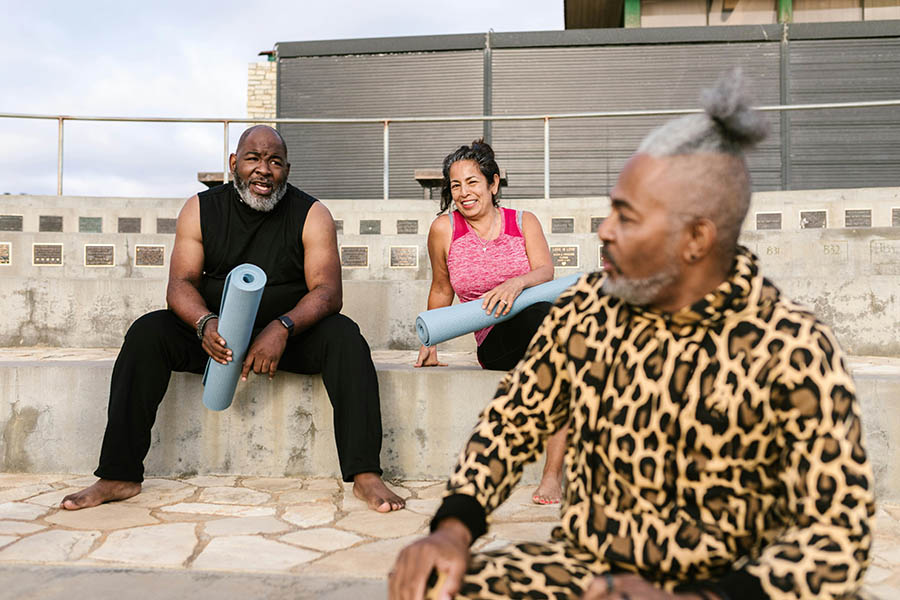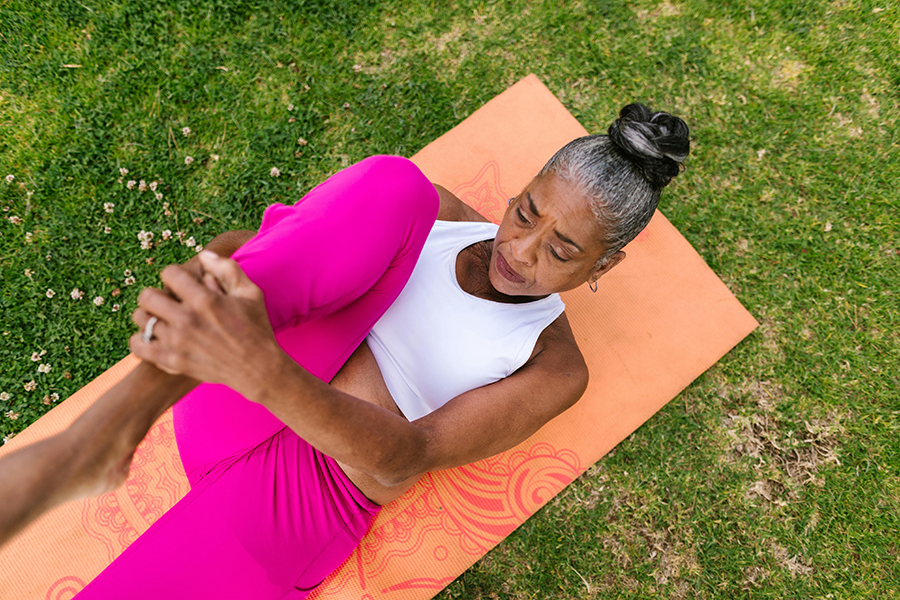Here are a few ways to set positive, realistic, and achievable goals for your fitness routine.

Setting fitness goals can be an exciting way to stay motivated and committed to a healthier lifestyle. The key to success is setting fitness goals that are both attainable and inspiring to avoid frustration, burnout, or even injury. Whether you’re just starting or looking to refine your current routine, these tips will help you create a plan that works for you. Be sure to consult with your doctor before beginning any new routines.
Start Small and Build Up
Rather than diving into an intense workout regimen right away, begin with manageable steps. For example, instead of aiming for an hour-long workout every day, start with 15-30 minutes of movement, four to five days a week. This consistency will help you develop a routine while allowing room for gradual progress. You can slowly increase the amount of time you spend as you get into a rhythm and feel yourself getting stronger.
Try a Group Exercise Class Once a Week
Adding a group exercise class to your schedule can boost motivation and accountability. Whether it’s yoga, spin, or strength training, being part of a class offers social support and structured guidance. If you’re unsure where to start, check out classes at your local gym, community center, or even virtual options. You can modify activities to fit your fitness level.
Incorporate Variety by Trying a New Activity Monthly
Keeping workouts fresh prevents boredom and keeps you engaged. Make it a goal to try a new activity once a month. This could be pickleball, swimming, Pilates, or even hiking. Rotating activities keep things interesting, challenges different muscle groups, and improves overall fitness.
Make Walking a Key Part of Your Routine
Walking is one of the easiest and most accessible forms of exercise. Whether you aim for a daily 20-minute walk or set a step goal, walking offers great cardiovascular benefits without the need for special equipment. You can also challenge yourself by increasing your pace, taking scenic routes, or walking with a friend for added motivation. Setting realistic goals around walking may look like slowly increasing your pace or endurance, adding hills or elevation changes, or carrying small weights for added muscle tone.
Set a Strength or Flexibility Goal
Strength and flexibility are just as important as cardio for overall health. If you’re new to strength training, start with bodyweight exercises or light weights two times per week. For flexibility, incorporating yoga or stretching after workouts can improve mobility and reduce injury risk. Setting goals to do these activities regularly can help you feel more relaxed and can help with other workouts, too.
Track Progress and Celebrate Milestones
Monitoring your progress can keep you motivated. Use a fitness journal, app, or smartwatch to log workouts and achievements. Celebrating small milestones—like increasing endurance, lifting heavier weights, or attending regular classes—can keep you inspired to continue your fitness journey. Consider adding rewards if you’re incentivized by them; perhaps you have had an eye on a new book, a fun exercise headband, or even placing a sticker in your journal is a great way to mark milestone achievements.
Listen to Your Body and Adjust When Needed
While consistency is important, listening to your body is equally crucial. Some days, you might need to scale back intensity or opt for gentler movement like yoga or stretching. Adjusting your routine when necessary helps prevent burnout and injuries. By setting realistic and adaptable fitness goals, you’ll create a sustainable workout routine that supports your long-term health and well-being. Whether it’s walking more, joining a fitness class, or simply finding new ways to move, the key is to start small and build momentum over time. For more fitness ideas, visit the CapTel blog.


